Cisco's Crystal Ball: 10 Tech Trends To Watch
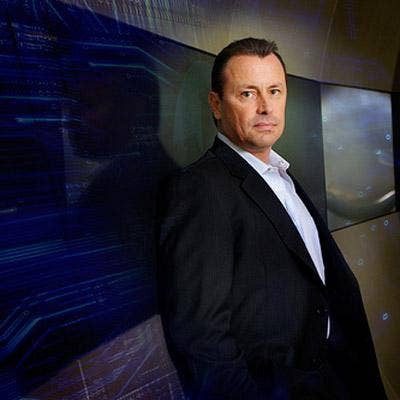
Ain't What It Used To Be
Longtime Cisco executive Dave Evans is Cisco's Chief Futurist, Innovations Practice, in the Internet Business Solutions Group, and part of his charter is to drive Cisco's thought leadership on how Cisco technologies play a role in the IT systems of tomorrow.
Addressing attendees in an afternoon keynote session at Cisco Live in Las Vegas, Evans laid out 10 trends he sees defining the technology discussion in future years. Here's a look at what Evans described.
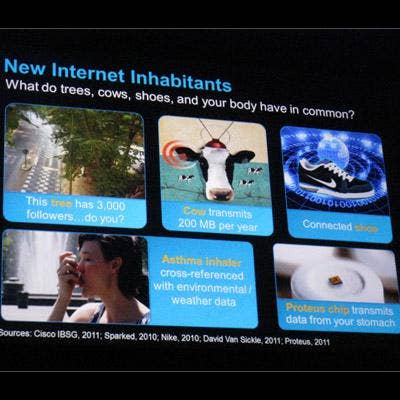
The Internet Of Things
The world wide Web has seen an evolution that began as academic, moved to informational, expanded to transactional (with e-commerce), and is now also social, with social networking. The Internet itself, however, Evans said, hasn't seen as much evolution until now, where an "Internet of things" means that everything from electronic dust motes to "connected shoes" to household appliances can be connected to a network and assigned an IP address. The transition from IPv4 to IPv6 addressing is crucial, Evans argued, because the number of sources that offer IPv4 addresses now is the tip of the iceberg compared to what can be "networked' in the future.
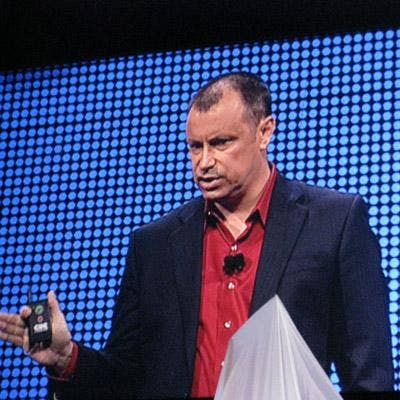
The Zettabyte Era
Cisco has focused a lot of discussion lately around the idea of the "Zettabyte Era" for Internet traffic. Its recently released Visual Networking Index (VNI) Forecast projected that global Internet traffic will quadruple by 2015, driven by an explosion in connected devices such as tablets and smartphones, a greater overall number of Internet users, faster broadband speeds and video.
The data equivalent to one zettabyte in book form, Evans said, would stretch 72 billion miles, from Earth to Pluto, 20 times. And what's more, he said, the data itself is becoming richer, with every surface -- from tables to signs -- becoming a digital display, and images evolving from megapixel, to gigapixel, to terapixel definition.
"Richer data demands more from the network," Evans declared.
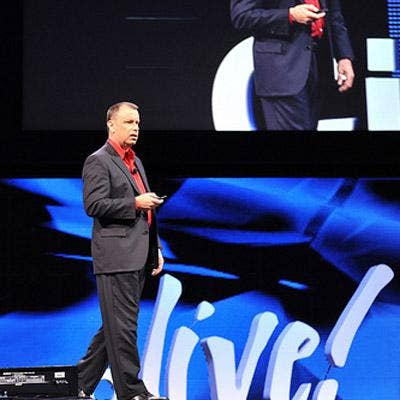
More Data In The Cloud
By 2020, Evans said, one third of all data will live in or pass through the cloud. More short-term, he said, citing Cisco Cloud CTO Lew Tucker, global cloud services revenue will jump 20 percent per year, and by 2014, the amount of IT spending on innovation related to cloud computing could top $1 trillion globally.
It'll be incumbent on technologists to create the infrastructure needed to support all that cloud computing, Evans insisted.
"Clouds are only as good as the networks on which they run," he said, adding that cloud computing's strength isn't about data in the cloud, but rather intelligence in the cloud.
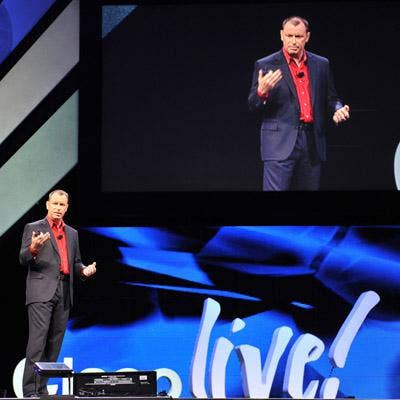
The Next 'Net
Connectivity will continue to evolve, Evans predicted, and the networks of tomorrow will be orders of magnitude faster than they are today. Evans said that back in 1990, his home Internet set-up was equipped for a single Telnet connection, whereas now, he can support 38 always-on connections. The difference in connectivity from then to now, he said, was an increase of 170,000 times. The difference between today's network connectivity and that of 10 years from now, Evans said, will be an increase of 3 million times.
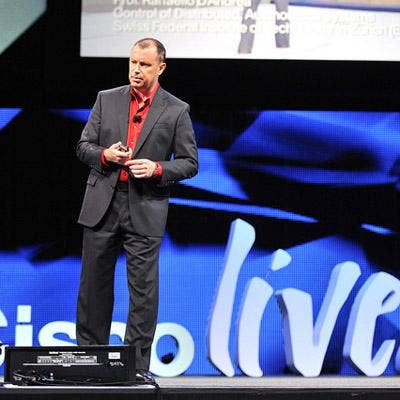
The World Is Flat
The ability of people to connect with each other all around the world, within seconds, via social media isn't just a social phenomenon, Evans said, it's a flattening out of who has access to technology. He cited the example of Wael Ghonim, the Middle East-based Google engineer whose Facebook page, "We are all Khaled Saeed," was a spark in the Egyptian uprising and one of the key events of the Arab Spring.
"The network gave them transparency," Evans said of the Middle East protests. "There is global awareness. Instantly."
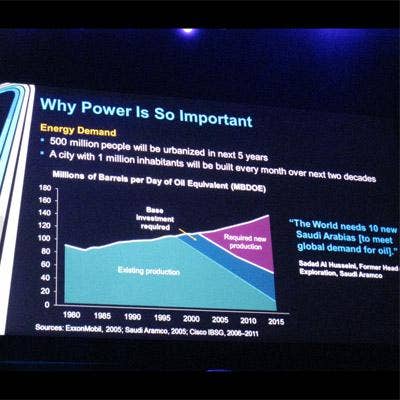
The Power of Power
Energy and power consumption are going to become even more relevant tomorrow than they are today, Evans argued -- how are all these networked devices going to be powered, and who or what is going to power them?
The answer, said Evans will be small things, "not big monolithic things and uber-soluitions." Solar arrays will become increasingly more important, he said, and he pointed at research being done at places like the Massachusetts Institute of Technology and other institutions, where teams are studying how to harness energy from Wi-Fi, how to harness energy in shoes creating by walking, and how to harness energy from noise.
More effective energy management is already being seen in smart grid technologies, in which Cisco is an active investor. Anything that generates or needs energy, Evans said, will be connected to or managed by an intelligent network.
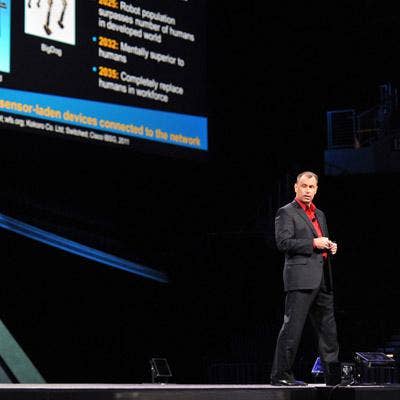
Technology That Conforms
Evans used the example of the VCR as a technology to which people needed to adapt. These days, however, "technology, for the first time, is finally adapting to us."
Evans cited examples such as image recognition, puzzle resolution, augmented reality and gesture-based computing as key examples of technologies that adapt to people.
"The network will enable a new class of end-user experiences," he said.
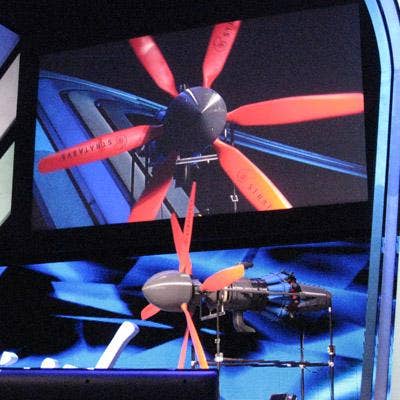
Anything On-Demand
The "big reveal" on stage at Cisco Live during Evans' keynote was a full-scale turbo-prop aircraft engine, whose 188 parts were produced using Fused Deposition Modeling (FDM) technology from Stratasys, and using Autodesk's Inventor 2010 mechanical design and engineering software. The turbo-prop, which was first unveiled during Autodesk University back in late 2009, has emerged as an example of the possibilities of 3D printing and production.
"If they had done the same thing with traditional machining, it would have cost $900,000 and would have taken 9 months to machine," Evans said. "It cost about $25,000 and took about one and a half months."
3D printing is one aspect of how in the future, Evans said, people will download things as easily as they download music.
"We are on the verge of mass-customization," he said.
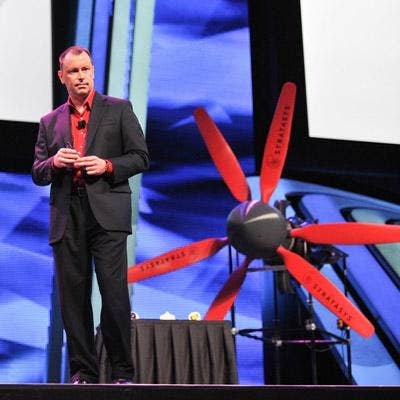
A New Species
Biomimetics, which is the study of biological systems as models for designing materials and machines, is coming into play with intelligent, digital entities, such as e-concierges and other artificial intelligence models with human-like interfaces.
Those models -- really, robots -- can perform facial recognition, speech elongation, and can remember previous interactions. Again, said Evans, it's a network focus.
"Robots," he said, "are sensor-laden devices connected to the network."
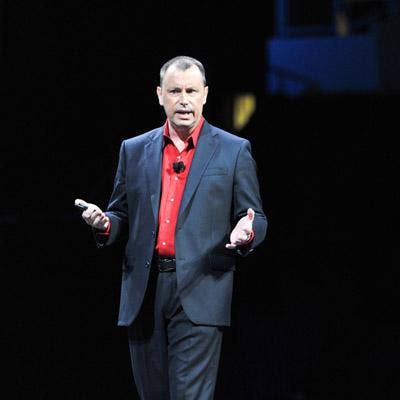
Making A Better Network
What all that connectivity means in he long-run, Evans said, is that computers and operating systems don't matter nearly as much as the network.
"The network matters, but not nearly as much as it will in the future," he said. "You are in an amazing industry."